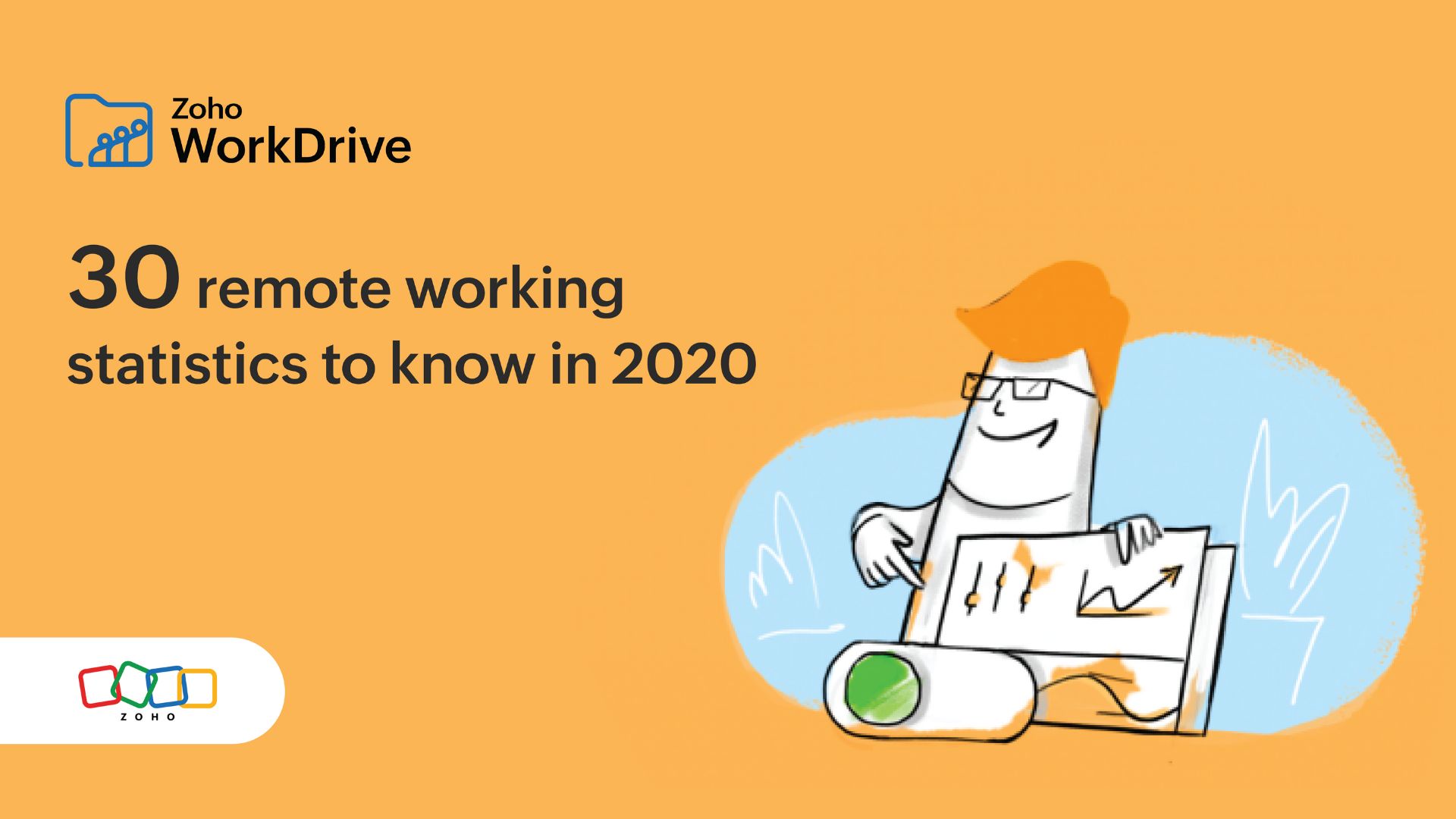- HOME
- Work Culture
- 30 Remote Working Statistics to know in 2020
30 Remote Working Statistics to know in 2020
- Last Updated : December 15, 2023
- 925 Views
- 4 Min Read

For many businesses during the worldwide COVID-19 pandemic, remote working has become the new normal. Working remotely, while a new concept for many, has brought great results to many organizations. It not only offers benefits to the employees, but also cuts down operational costs and adds value to the employers.
We’ve compiled some useful remote working statistics from around the world to discuss how remote workers feel about remote work, as well as the benefits and struggles that are part of it.
Before COVID-19
Even before the effect of COVID on the working population, there were already 4.7 million people working remotely in the U.S., which is around 3.4% of the population. (Forbes)
From 2005 to 2017, remote work saw a 159% increase. (FlexJobs)
Since 2015, the growth rate in the remote workforce is 44%, and the number rises to 91% when considering the previous 10 years. (FlexJobs)
Growth in remote working
The number of people in the United States working from home once a week rose from 10% in 2010 to 40% in 2020. (GetApp)
99% of the 2500 remote workers surveyed by Buffer said they would like to work remotely, at least some of the time, for the rest of their career.
95% of remote workers surveyed would recommend it to others. (Buffer)
80% said that if they were deciding between two job offers, they would accept the one that offers flexible work. (The IWG Workplace Survey – 2019)
54% of people surveyed in the IWG Workplace Survey-2019 preferred to have control over their workplace than working for a prestigious company.
70% of people in the IWG Workplace Survey-2019 said that they consider ‘having control over the work environment’ as the key factor when they look for a new job.
Technology insights
The Staples Workplace Survey 2019 found that 52% of employees use their company-provided computers when they work from home.
The Staples survey also reported that 36% of employees use cloud-based management tools for a connected workforce, whereas 13% work on collaboration software.
According to Buffer, 75% of companies do not intend to pay for their WFH employees’ internet cost at home, and 71% of companies don’t reimburse or paid for their employees’ co-working costs.
Employee benefits
40% said the benefit of having a flexible schedule made them want to work from home. (Buffer)
30% picked working from any location as the reason to choose remote working. (Buffer)
84% of people choose to work from home for remote work, while 8% wanted to work from co-working spaces, and 4% from coffee shops. (Buffer)
45% of employees who are working remotely are getting more sleep, according to the CoSo Cloud Survey.
The CoSo Cloud Survey further reported that 35% are getting more physical exercise, and 42% are eating healthy food.
51% of WFH employees are happy that they can spend more time with their family now (CoSo Cloud)
70% of respondents say, “Having a choice of work environment is a key factor for me when evaluating new career opportunities.” (The IWG Workplace Survey – 2019)
Employer benefits
77% of people who work from home said they were more productive, while 30% said they did more in less time, and 24% said they did more in the same amount of time. (CoSo Cloud)
23% of the survey responders said they would be willing to work longer hours when they work remotely. (CoSo Cloud)
85% of businesses say that allowing flexible work locations has made their company more productive. (The IWG Workplace Survey – 2019)
52% say they are “less likely to take time off,” even when they are sick (CoSo Cloud)
42% of the remote workers surveyed said they “feel just as connected with their colleagues as if they were working on-premise,” while 10% reported they feel “even more connected.” (CoSo Cloud)
What drives businesses to bring in remote working?
Over 15000 professionals from 80 countries in various sectors were surveyed in the IWG workplace survey 2019. Here is a snippet from the study on what people think are the reasons why companies in their industries are moving to a flexible working environment.
- 79% of people accepted that having a flexible workspace is driving better results for their businesses.
89% of the surveyed people said that having flexibility in the workspace can increase productivity in their sector.
65% felt remote working is introduced in their sector businesses to reduce operational costs.
53% believed the companies in their sector moved to a flexible workspace environment to shed unnecessary assets, manage risk, and consolidate their portfolio.
65% stated that flexible working has been brought in to their sector to scale up and down more rapidly.
64% voted that businesses in their industries moved to flexible workspace culture to improve speed to market.
The Wrap
The statistical facts compiled here show that the remote working is not just a trend and is here to stay. With our current situation, if given a chance, both employers and employees will continue to adopt flexibility in their work and their way of life. If you are a manager trying to create successful remote teams, it’s a great time to start investing in cloud-based content collaboration software like Zoho WorkDrive to boost your team’s efficiency.


